Everyone says the current flow is indicate by arrows then why in NPN transistor current flow in collector terminal actually arrow indicate in emmiter down words.
Advance thanks.

Everyone says the current flow is indicate by arrows then why in NPN transistor current flow in collector terminal actually arrow indicate in emmiter down words.
Advance thanks.
Current flows in all three terminals of a transistor.
Conventional current flows between base and emitter in the direction of the emitter arrow.
Conventional current flows between collector and emitter in the direction of the emitter arrow.
Conventional current in a transistor is the sum of all current flows, including positive holes which move in the direction of conventional current, and negative electrons which move opposite to conventional current.
Why does only the emitter have an arrow? As the current flow from the other two terminals is the same direction in the emitter, only the emitter needs an arrow, arrows on all terminals would clutter the symbol. My pet theory is that it marks the important part of the transistor, as the base/emitter region is where all the controlling goes on. The collector is 'just' sweeping up the charge carriers emitted by it, so is a high impedance 'current source' terminal. The clue is in the name of the terminal, the 'collector'. In much the same way, FETs and tubes have a controlling end (gate/source, grid/cathode), and a high impedance end (drain, anode), though of course work by a different mechanism.
It's interesting to note that the only people who get hot under the collar about electron flow are students meeting it for the first time. It's the first look they get a bit deeper into the 'mysterious' world of electricity. As the direction of electron flow and conventional current are opposite, they feel mightily aggrieved that they have been 'lied to' all this time. The Drude model was developed at the turn of the last century, and treats electrons as particles flowing under an electric field, hitting fixed atoms. It's quite intuitively appealing, and works quite well quantitatively for some metals, but fails miserably for others, and doesn't model high frequency effects at all. From having a mixed performance metals, it doesn't even start to model semi-conductors. It's barely better than the hydraulic model.
Engineers designing at the circuit level, scientists using equipment, use the simplest model that's adequate to do the job, and that's conventional current. Depending on whether conduction happens in a wire, a semiconductor, a plasma, an electrolyte, there are positive and negative charge carriers, going in different directions, with the total current being due to the sum of all the flows. Scientists designing the transistors themselves and the semiconductors needed for them use the next simplest tool that works, and that's quantum mechanics, not Drude.